It's pretty much an undisputed fact that nautilus are awesome, and the same goes for their siblings, the extinct ammonites. Both are cephalopods with external, chambered shells, but they fall into different subclasses: Nautiloidea and Ammonoidea. How can you tell the difference? As this awesome, easy-to-read page shows, nautilus hit the scene first in the Late Cambrian, and in the Devonian, ammonites evolved as an offshoot of that branch. (The first nautilus had straight shells!)
While there are plenty of features that separate the pair (genetically, ammonites are more closely related to the subclass Coleoidea, which contains squid and octopus!), two morphological traits can help to easily distinguish between nautilus and ammonites: their siphuncles and septa.
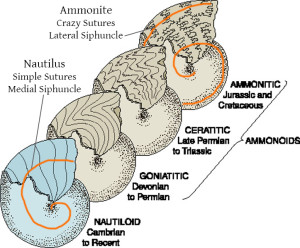
Modified from Harold Levin.
The siphuncle is a tube of tissue that runs from the innermost chamber to the outside. Only the outermost chamber is exposed (the rest are sealed off, except for the siphuncle running through them); when a new chamber forms, the siphuncle removes the water, leaving behind only gas and increasing the animal's buoyancy. In nautilus, the siphuncle runs medially through the chambers, whereas in ammonoids, it ran along the outside lateral edge.
The shell chambers are separated by walls called septa. Nautilus have simple septa, while ammonites had complex septa. It's believed that the complex septa could have benefited the ammonites in a few ways: 1) increasing the surface area for tissue attachment, as well as increasing shell strength to 2) fend off predator bites and 3) handle deeper dives. Similarly, ammonites had ornate sutures.
In the ammonoids, the septae are convoluted or wrinkled, and the sutures make more complex patterns. In contrast, the nautiloids have smoothly curved septa. - Harold Levin
Unfortunately, the ammonites kicked in the great K-T extinction along with the dinosaurs, and nobody is sure why they keeled but nautilus made it through. There are still six nautilus species (in two genera) hanging out in the coral reefs of the Indo-Pacific, but their numbers are low and getting lower as people harvest their shells.
| Nautiloids | Ammonoids | |
| Siphuncle | Center | Lateral |
| Septa | Simple | Complex |
| Appear | Late Cambrian | Devonian |
| Extinct | No | Yes |
Bonus: There are two Pokemon based on ammonites: Omanyte and Omastar.

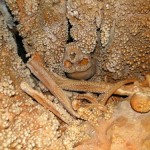
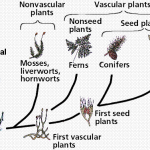
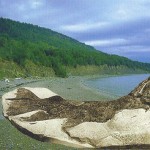


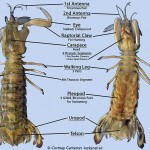
Pingback: Disney Designs No.1: Poor unfortunate shells | Florence The Magpie